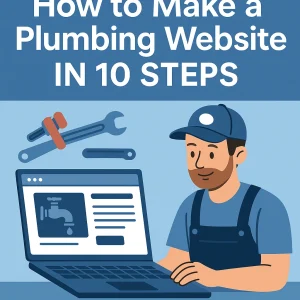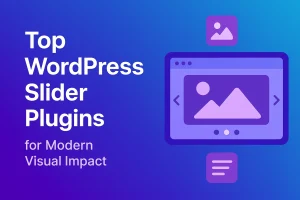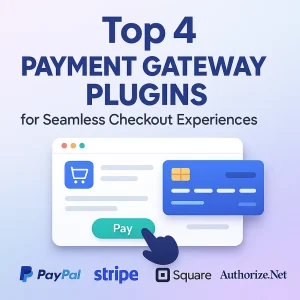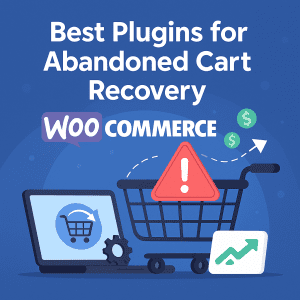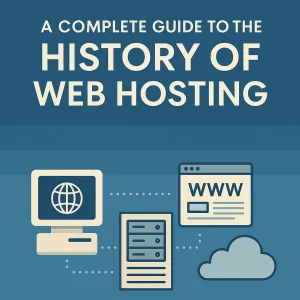 You are good at what you do- whether it is plumbing or building accounting or boutique retail. So, you know your business almost like the back of your hand. When it comes to your website, do you treat it like any other random collection of pages? Or is it a well-groomed machine for growth?
You are good at what you do- whether it is plumbing or building accounting or boutique retail. So, you know your business almost like the back of your hand. When it comes to your website, do you treat it like any other random collection of pages? Or is it a well-groomed machine for growth?
If you leave your plumbing company's website to be a disorganized assemblage of broken links and service pages buried deep within its inner folds, you frustrate your potential clients and are leaving a lot of money on the table. A well-structured website isn’t just about SEO—it’s also about helping visitors find exactly what they need quickly. For instance, service-based businesses like plumbing companies can benefit greatly from clean navigation, logical page hierarchy, and SEO-focused internal linking. If you’re planning to build or redesign your plumbing site, learning how to organize your layout and optimize for search is essential. Check out our detailed guide on how to make a plumbing website to discover practical steps for designing pages that load fast, rank higher, and attract local clients through smart website architecture and professional hosting solutions in Canada.
An award-winning website, in our view, does not just have pretty pictures. Instead, it provides the foundation on which solid, fast, and scalable websites can be built. Building or redesigning your plumbing site means understanding how to set up your layout and optimization criteria.
There is a choice of small business website design that will make it easy for Google to understand. This detailed direction is a guide to building an architecture that works for users, pleases search engines, and makes you shine all the way from looking for the best website design agency in Canada to just a good web hosting service for powering your success.
Anyone ready to architect the success? Then we offer 13 proven tips for a successful SEO site structure.
Section 1: The Blueprint (Foundation & Hierarchy)
A well-laid-out website architecture should be compared to the triangle. In simple words, it has a very broad base with many specific pages piling on top, which then naturally narrows out to the tip, which eventually is the homepage. This hierarchy sends clear authority signals to search engines (Google loves order!) and creates a smooth, frictionless user journey. Getting this blueprint right is the most critical step for long-term SEO success.
Tip 1: Adopt the "Flat" Architecture (The Three-Click Rule)
One of the fundamental principles of SEO for any website, including a small business, is the easy access to all their core content. The goal is Link Equity Flow-MAXIMIZED-the authority from high-value pages, such as your homepage, transferred down to your desired ranking pages.
What it is: A flat site structure means that a user (or a search engine crawler) can reach any significant page on your site with not more than three to four clicks from your homepage. The more human-accessible/reachable the page, the more reachable it is for Googlebot.
Why it matters (The Science of Depth):
- Maximizing Crawl Budget: Google may not crawl all pages in larger sites. Flat structure simply ensures that more of your vital pages are being found index quickly, thus preventing them from turning into orphanage.
- Prioritizing Link Equity: Every Click signifies diluted authority flow (PageRank) from the homepage. A page that is deeply buried tends to receive so little authority that it becomes difficult to rank against quality content.
Tip 2: Format URLs Using Intuitive, Keyword-Integrated Structure.
Clean, descriptive, and well-linked to the hierarchy of your site-all these definitions hold true for your URLs because they serve as both pointers for users and search engines and provide instant context about the content of the page while also contributing to click-through rates (CTR) in the results.
Best Practice:
- Readability: Separate words with hyphens (e.g., /emergency drain cleaning/), keep them short, include the target keyword as early as possible, and avoid stop words (like 'a', 'the', 'is') unless absolutely necessary.
- Consistency: Use only lowercase letters.
- Avoid Dates: Do not include dates in your service or category page URLs, as this will make the content seem old and will require a redirect if the content is ever modified.
- Structure and SEO Value: Your URL should logically reflect your site's hierarchy to reinforce the page's topic. This nested structure helps Google categorize the page correctly.
- example.com/services/drain-cleaning/ (Category/Service)
- example.com/areas/ottawa-plumbing/ (Geo-targeted Location)
- example.com/blog/2025/water-heater-buying-guide/ (Blog content is often separated)
Tip 3: Focus Your Top-Level Navigation
Your main menu is the absolute most important element of your site architecture, as it defines your primary content categories, guides users, and dictates how Link Equity is initially distributed. These menu links should point to your Pillar Content.
- Keep it Simple (Fewer Choices, Faster Decisions): Limit your main navigation to 5-7 core categories (e.g., Home, Services, About, Blog, Contact). Too many options can overwhelm the users (a phenomenon called the paradox of choice).
- Plumbing Example (Mapping to User Intent): Your main "Services" link should be a hub page that lists all service categories. This will be the main hub so that internally links to all the customers.
- Pillar Page: com/services/ (Links to all other service pages below.)
- Spoke Pages: com/services/drain-cleaning/, example.com/services/water-heaters/, etc.
- Advanced Tip (Internal Linking): Keep the main navigation clean because that's where you are going to clear the ground for the more minor, less significant but necessary pages such as Privacy Policy, Terms, and, for the very large sites, the eBay’s HTML sitemap .
Tip 4: Implement Breadcrumb Structured Data
Breadcrumbs are those small, clickable navigational links, usually found near the top of the page, that illustrate the user’s exact path from the homepage (e.g., Home > Services > Drain Cleaning).
- User Benefit (Context and Navigation): They provide an instant, unobtrusive way for users to navigate back up the hierarchy without hitting the back button, substantially improving user experience (UX) and lessening bounce would benefit.
- SEO Benefit (Schema and SERP Clarity): Using breadcrumb structured data (a specific JSON-LD coding format) enables the search engines to understand your site's hierarchy in a machine-readable way.
This can result in cleaner, more descriptive listings in the search results, often replacing the full URL with the breadcrumb path (e.g., Home → Services → Drain Cleaning), which enhances click appeal.
Section 2: Technical SEO Essentials (Bot-Friendly Optimization)
Part 2: Technical Architecture & Crawl Efficiency
A perfect site map becomes useless when the Google crawler (Googlebot) cannot access or isn't moving efficiently through your content and this brings up Technical SEO Architecture which is created to ensure best possible experience for resource efficiency on search engine bots.
Tip 5: Manage Your Crawl Budget Efficiently
Crawl Budget is the limited number of pages a search engine bot will crawl on your site within a given time frame. Small business sites have little to think about crawl budget, but optimizing it shows a stage of technical maturity which can become very important for sites with thousands of pages or that are constantly updated.
What it is: The frequency and depth at which Googlebot visits your site. All this wasted time to crawl unimportant pages means less time for your valuable, high-priority pages.
Optimize Strategies:
- txt Priorities for Crawl Control: Disallow with your robots.txt file directories or files you never want Googlebot to crawl, like /wp-admin/ internal search results, or other large unneeded media files.
- Critical Distinction: txt should not be used to hide already indexed pages or ones you want to be de-indexed eventually. Disallowing a page keeps Google from seeing the no index tag which means that even after being disallowed, the page's URL may still turn up in search results without description.
- Noindex for Index Control: Use the noindex meta tag (or header) on pages like "Thank You" pages, archived tags, or staging content. Tells Google: "You can crawl this page, but do not display it in search results."
- Fix Broken Links (404s/410s): Every 404 error represents wasted crawl actions. Use tools like Google Search Console (GSC) or external audits to identify and fix or redirect these immediately. A 410 Gone status code indicates that the page is permanently gone and will not return, which can lead to faster de-indexing than a 404.
- Speed up Site (Time is Money). Increased page speeds translate into more pages crawled by bots in the same amount of time. Improving page load speed is a direct boost to crawl efficiency.
Tip 6: Be Expert Redirector (Especially 301s)
If you remove a page, combine content, or modify a URL, implement a redirection. Redirect pages will take users and search engines to the correct new page. This is important for retention of the Link Equity (SEO value) accumulated by the old page.
- The All-time Go-to: Apply always a 301 redirect (Permanent). This tells search engines that "this page has moved permanently and you can pass nearly all the authority to the new page." This is the standard for content migration.
- Temporary: This section is only for 302 (Found/Temporary). This should be utilized for temporary movement but for A/B tests or a time-fixed campaign during routine maintenance. Hence, Google is instructed to hold on to the old URL SEO value as the original page is coming back. A permanent move with a 302 is a very typical damaging practice in SEO.
- Banish Redirect Chains: Do not create redirect chains (Page A Page B Page C). This is how a network slows down a crawler, degrades user experience, and may dilute the authority passed along. Always redirect an old URL directly to the final destination URL
Tip 7: Enable Canonicalization to Avoid Duplicate Content
Search engines see a URL with a capital letter (/PageA) and one with lowercase letters (/PageA) as two entirely different pages. This is where duplicate content issues knock-in that will confuse Google and dilute your link equity across these several URLs.
- What it is: Canonicalization is the process of setting a Canonical Tag (<link rel="canonical" href="..."/>) on a page that points to the single version the page.
Such as:
- Filtering/Sorting: This is mainly used in category pages by e-commerce sites in which filters of type (color, size, price) derive hundreds of unique URLs with the same content. The canonical tag will point all these filtered pages back to the main category page.
- HTTP/HTTPS & WWW/Non-WWW. Your site should have only one preferred version, e.g., https://www.example.com; all other versions (e.g., http://example.com/) must 301 redirect to this preferred canonical version.
Tip 8: Monitoring Health with Google Search Console (GSC)
The Google Search Console is one of free Google tools and is your direct, vital to-the-core communication with the largest search engine in the world. It is one of the most important tool for the technical SEO health monitoring.
Key Reports to Master:
- Index Coverage: See what pages exactly Google indexed, which it did not, and why (e.g., "Excluded by 'noindex" tag," "Crawl anomaly). This is your crawl budget report card.
- Sitemaps: You submit your primary XML sitemap here and monitor for crawl errors. The sitemap is your direct instruction to Google which is most important pages.
- Core Web Vitals: GSC provides data essential for page experience metrics such as loading speed (LCP), interactivity (FID), and visual stability (CLS), all of which affect your ranking.
- URL Inspection Tool: Use this in order to see how Google last crawled a particular URL and request immediate re-indexation for an updated page.
Section 3: User-First Architecture (Mobile & Speed)
Sometimes when you hear boring terms like architecture, you might cringe because, unfortunately, that's SEO now. I mean, it is how fast and reliably a user gets sight of it during the mobile time. This is why Here's the Technical aspect of SEO wedding UX.
Tip 8: Design for Mobile-First Indexing
A couple of years back, Google introduced mobile-first indexing, which makes it a point to primary use the mobile version of any website for ranking and indexing. Google may not pick up any content or links that are missing in mobile view-a disaster to SEO.
- Key Action: Content Parity is Non-Negotiable. It is mandatory that the mobile site has the same content (text, images, hidden tabs, accordion menus, links) as the desktop site. Avoid hiding important keywords or links on mobile.
- Speed is King (Core Web Vitals): Mobile users are on their phones often on slower connections. Hence, fast loading times must be prioritized when creating great architecture, as viewed through the Core Web Vitals (CWV) metrics defined by Google.
- Implementation Steps: Try to minimize image file sizes, leverage browser caching, and use a fast and reliable hosting provider to help. An increase in mobile speed would mean improved conversion rates and decreased bounce rates, with a one-second enhancement brought with this step.
Tip 9: Pass the Mobile-Friendly Test (The UX Checklist)
Never guess; just test it. Any page of your website will be instantly tested using a Google Mobile-Friendly Test or Google Search Console Mobile Usability Report.
- A "Fail" goes: The text is small, buttons are placed too close for comfort, and the content extends beyond the screen, making it horizontally scrolled.
- Fixing these problems is as easy to do and as powerful an architecture change as Google loves, rewarding those sites with improved user experience with increased authority.
Tip 10: Optimize Internal Links with Anchor Text
Internal links are the highways for your website. They help pass "Link Equity" (ranking authority or "link juice") to important pages and guide users to relevant content. Strong internal links reinforce topical relevance for your key pages.
- Strategic Linking (The Pyramid Flow): Link from high-authority pages (like your main "Services" page, well-ranking blog posts, or the homepage) to your core money pages (like "Emergency Drain Cleaning"). This deliberately pushes authority down the funnel to pages that need to rank for high-value keywords.
- Keyword-Rich Anchor Text: Don't just link with "click here." Use descriptive, keyword-rich phrases. Instead of "Read more about our service here," use "Read more about our high-efficiency water heater installation service. " This tells Google exactly what the destination page is about.
Section 4: Sitemaps, Tagging, and Scalability (The Final Audit)
Architectural design considerations last deliberated ensure search engine discoverability in full measure and furnish the user with an efficient reference "index" for easy access in setting up future development.
Tip 11: Maintain and Submit Your XML Sitemap
XML sitemaps will not directly affect your site ranking, but will give search engines a clear order to crawl all of the pages that you have marked as important. This will serve as the last Source of Truth for your website architecture.
Keep it clean( Inclusions of only Quality Pages): Keep only the pages which you want to get indexed and ranked. It means, you need to exclude pages with:
- 4xx/5xx status(broken/server errors).
- Noindex tags.
- Non-canonicalized versions of the URLs.
Make it automated: Your CMS should ensure that the sitemap is updated automatically on any addition or removal of a page. You can then submit that URL through Google Search Console and monitor errors there at regular intervals.
Tip 12: Consider an HTML Sitemap for Large Websites
An HTML sitemap is a classified listing of all primary pages in your site, human-readable, and normally linked in the footer of your site.
- When It Is Necessary: While not strictly a necessity for smaller sites with simple navigation, this enhancement is a huge help to massive, deep sites, for example, e-commerce and publishing.
- User benefit: An HTML sitemap is an effective internal link safety net, ensuring that the deepest category or product pages get at least one internal link for discoverability among users and Googlebot.
Tip 13: Regular Maintenance: Audit Your Architecture
Websites do not merely run one time. These are living ecosystems. Therefore, while adding new services, blog posts, or geographic pages, you must make sure that they fit properly into the existing architecture and do not create dead ends.
- Use Auditing Tools: Semrush Site Audit or Screaming Frog sounds essential for this maintenance. These crawl your site just as Google would and find some of the greatest problems:
- Orphaned Pages: No internal link points toward orphan pages, making it impossible for Google to find any such pages and rank them at all.
- Redirect Chains: These chains are long and sometimes slow (Example A to B to C).
- Deep Paging: There need be more than four clicks from the homepage to get on the pages showing they have failed in the flat architecture.
What Bad Website Architecture Looks Like Commonly Avoided:
The major architecture blunders that can damage the SEO and user experience both are great structural failures and perfectly designed websites. They are:
- Overlapping or Redundant Categories: Google is confused with conflicting pages of the same keyword in a website (Emergency Plumbing vs. 24/7 Plumbing Help): Combine all the overlapping contents into a single and strong page.
- Not a Proper Attention Given for Internal Links: Numerous great blogs are written up from many business owners but no connections are made to their service pages. Internal linking is the primary way that tells Google how all your content connects. Use it strategically.
- Images and Media Assets Poorly Optimized: Slow your site with heavy and uncompressed images or even videos, decreasing its crawl budget and ruining UX, thus compressing images and hosting videos externally whenever possible.
- Avoiding Local SEO Architecture: For businesses with multiple services: 'plumber in Calgary', 'plumber in Edmonton', make a dedicated-but-structured page under a consistent hierarchy (like /locations/calgary/, /locations/edmonton/).
- JavaScript-Only Navigation: If navigational links on the website depend solely upon JavaScript, it would be difficult for Google to crawl its contents considerably. Always have alternatives in HTML for backup navigation links.
All this is nullified by not falling into these common potholes on the track. Your SEO structures exist not merely on paper-they really work within field search visibility.
Final Thoughts: Build for Longevity, Conquer the Future
The architecture of a good website is not just a requirement on paper; it is a strategy upon which every other digital marketing effort has to hinge, from targeted keyword research through to engaging content development. It defines how fast your website is, the flow of authority through it, and more importantly, the growth capacity of your site.
When well designed, structure acts as an armor for your website when it comes to algorithm changes. It is about user journeys that are logical, well-structured, and very fast-all of which is valued and rewarded by Google.
Success Blueprint
If highly optimized local success is the goal of small business propellers, then an SEO-friendly website design for small businesses with clear architecture can make it happen. Your architecture should serve as a thorough road map to both users and search engines by completely clarifying your service areas and core offerings. Let an unusual architecture hold you back and quickly blow away your precious crawl budget!
To know whether you have the right blueprint or not, check out our full-blown guide on plumbing websites. The guide offers pragmatic steps to design pages that load fast, rank higher, and attract local customers using intelligent information architecture and high-performance hosting solutions.
Ready to Build Your Digital Empire?
Building an online "kingdom" with incalculably high rankings is precision engineering. 4goodhosting is about building to last, scaling, and ranking-your foundation is here with either the specialized expertise of any of the best web hosting service -or simply a rock-solid hosting service that ensures stellar performance. Stop optimizing a broken structure, and start building for the future.





